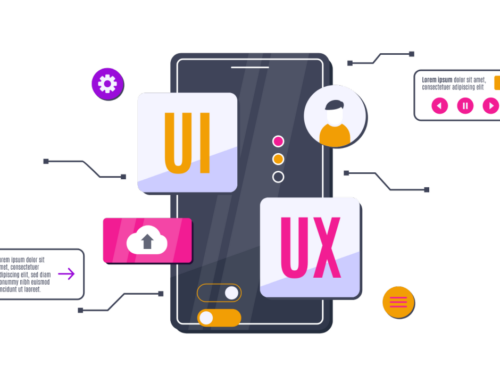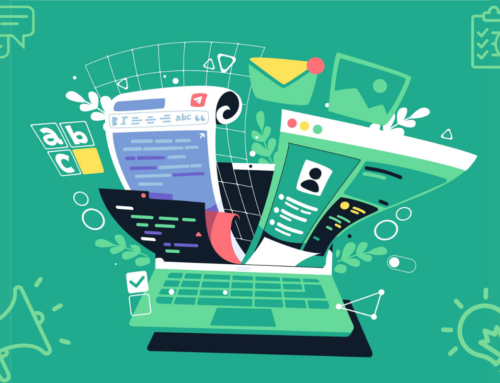Throwing money at digital ads and hoping for the best is about as effective as yelling at your TV when your favorite team is losing. If you’re still relying on gut feelings rather than hard data to drive your advertising strategy, you’re leaving money on the table. And not just a few bucks—possibly thousands.
A well-optimized, data-driven approach to digital advertising can skyrocket your ROI. In fact, companies that use data-driven marketing are six times more likely to be profitable year over year. That’s not a suggestion—it’s a fact. So, let’s dive into how you can stop wasting money and start running digital ads like a data-savvy pro.
The Problem with Guesswork in Digital Advertising
Imagine setting up an ad campaign, crossing your fingers, and just hoping it works. That’s what happens when businesses don’t leverage data. They pour money into generic ads, target the wrong audiences, and then wonder why conversions are as low as a diet soda’s sugar content.
The problem? Digital advertising platforms are engineered to reward precision. Facebook, Google, and LinkedIn thrive on data. The more refined your targeting, messaging, and bidding strategy, the better your results. If you toss ads into the void and pray, you’re basically playing digital marketing roulette.
Why Data is the MVP of Digital Advertising
If digital advertising were a basketball team, data would be the MVP, the coach, and the playbook all rolled into one. Without it, you’re just guessing which plays work. With it, you can optimize, refine, and scale campaigns that actually drive results.
Here’s why data is everything:
- It tells you what’s working and what’s not. You don’t have to rely on gut feelings; analytics show you exactly which ads drive conversions.
- It saves money. Instead of wasting your budget on ineffective ads, you can allocate funds where they make the biggest impact.
- It helps you reach the right people. No more shouting into the void; data helps you reach your targeted customers with laser precision.
- It improves over time. The more you track and tweak, the better your campaigns perform.
Now that we agree data is king, let’s talk about how to use it wisely.
Step 1: Know The Metrics
Before we go any further, let’s break down the must-know metrics that separate the digital ad pros from the ones setting money on fire:
- CTR (Click-Through Rate): Measures how often people click your ad after seeing it. A low CTR? Your ad creative might be as exciting as a soggy sandwich.
- CPC (Cost Per Click): This shows how much you pay per click. The lower, the better, unless those clicks aren’t converting.
- Conversion Rate: The percentage of visitors who take action (buy, sign up, etc.). If this is low, your landing page might need some tweaking.
- ROAS (Return on Ad Spend): The king of ad metrics. It tells you how much revenue you’ve earned for every dollar spent.
- Impressions vs. Engagement: If your ad gets tons of views but zero interactions, it’s about as effective as a billboard in the middle of the ocean.
Tracking these metrics is non-negotiable. If you’re not watching them like a hawk, you’re just hoping for the best, and we already discussed why that’s a terrible strategy.
Step 2: Audience Targeting
A common mistake? Targeting everyone. Unless you’re selling oxygen, not everyone needs your product.
Platforms like Facebook and Google have made audience targeting an art form. But if you’re not using the right tools, you’re basically trying to sell winter coats to beachgoers. Here’s what you should be doing:
- Use Lookalike Audiences: These are gold. Facebook and Google can analyze your best customers and find similar people.
- Retargeting is Key: You know those creepy ads that just keep following you around after you visit a website? That’s retargeting, and it works like a charm.
- Segment Your Audience: Not all buyers are the same. Segment your audience based on analytics like behavior, interests, and demographics for better results.
- Stop Targeting Broadly: The broader your audience, the more impressions you will waste. Narrow it down, and watch your ROI climb.
Step 3: A/B Testing
Your first idea is rarely the best, and if you’re not A/B testing, you’re basically guessing. As we’ve established, guessing is a terrible strategy.
A/B testing (AKA split testing) is the process of running two slightly different versions of an ad to see which performs better. The key? Test one thing at a time.
- Headline Variations: A small wording change can make or break an ad.
- CTA (Call to Action) Optimization: “Buy Now” vs. “Get Yours Today” test, which one converts better.
- Visuals: Some audiences respond better to videos; others prefer static images.
- Landing Pages: Don’t send traffic to a clunky, slow-loading site and expect conversions.
A/B testing turns good campaigns into great ones. By running multiple ad variations and analyzing performance, you can double down on what works and ditch what doesn’t.
Step 4: Let AI Do Some Heavy Lifting
If you’re manually adjusting every aspect of your campaign, you’re wasting valuable time. AI-driven optimization tools can adjust bids, optimize placements, and refine targeting without you lifting a finger.
Tools like Google Ads’ Smart Bidding and Facebook’s automated campaign optimization use machine learning to get the most out of your budget. The best part? They continuously improve over time.
Let AI do the heavy lifting for you while you focus on strategy.
Step 5: Optimize Landing Pages for Maximum Conversions
Great ads drive clicks, but if your landing page is a mess, those clicks won’t turn into sales.
Here are a few ways you can improve your landing pages using data:
- Heatmaps: Tools like Hotjar show where users click, scroll, and drop off so you can optimize accordingly.
- Form length testing: Sometimes, fewer fields mean higher conversions. Test different versions to see what works.
- Page speed optimization: A slow page kills conversions. Use Google’s Page Speed Insights to identify speed issues.
Step 6: Scale Up
Scaling an ad campaign too early is like trying to sprint before you can walk. You need proof that a campaign works before throwing more money at it.
Here’s the smart way to scale:
- Identify Winning Ads: Look for ads with high CTR, strong conversions, and solid ROAS.
- Increase Budget Gradually: Don’t double your spending overnight; incremental increases are key.
- Expand Winning Audiences: If a specific segment is converting well, expand it slightly to capture more potential buyers.
- Duplicate and Test: Take your best ads and test slight variations to see if you can improve them even more.
Scaling isn’t about blindly spending more. It’s about carefully increasing what’s already working.

What to Avoid in Data-Driven Digital Advertising
Now that we’ve established what you should do to maximize your ROI with a data-driven advertising approach, here’s what you should absolutely watch out for;
- Ignoring small data sets: If you test something with 10 clicks, that’s not enough to make a decision. Let campaigns run longer for meaningful insights.
- Overcomplicating analysis: Not every metric is useful. Focus on the KPIs that directly impact your bottom line.
- Failing to adapt: Just because something worked last month doesn’t mean it’ll work forever. Keep testing.
The Future of Data-Driven Advertising
The future of data-driven advertising is looking smarter, more intuitive, and almost psychic. Here are some key trends shaping the road ahead:
1- More Personalization:
Ads will feel less like ads and more like tailored recommendations. With advanced data analysis, businesses will be able to deliver hyper-personalized content based on browsing habits, purchase history, and even real-time behaviors.
2- AI-Powered Predictive Analytics:
Instead of reacting to data, AI will help businesses predict trends before they happen. AI and machine learning are making it possible to forecast consumer behavior. Brands will soon rely on predictive analytics to anticipate shopping trends, optimize ad placements before demand spikes, and fine-tune marketing strategies based on data-driven insights rather than guesswork.
3- Voice Search and Conversational Ads:
Voice search is becoming crucial day by day as smart voice assistants like Alexa, Google Assistant, and Siri grow in popularity. Expect to see more voice-activated ads, interactive audio marketing, and AI-driven conversational ads that engage users in a natural dialogue rather than just displaying static content.
In short, data-driven digital advertising is revolutionizing how brands connect with consumers. Businesses that embrace these innovations will thrive, while those that resist may be left in the digital dust.
The Bottom Line
Digital advertising without data is like driving with your eyes closed. Sure, you might make it a few miles, but eventually, you’ll crash. A data-driven approach to advertising takes the guesswork out of your strategy, helping you maximize ROI, reach the right audience, and continuously improve.
Stop relying on guesswork, start tracking real metrics, and let automation do the heavy lifting. Your digital ads will perform better, your ROI will increase, and you’ll finally feel like you’re in control of your ad spend.
Data doesn’t lie, and those who listen to it will be the ones dominating the digital landscape. Chances are your competitors are using data-backed insights to maximize their ROI. If you don’t keep up, you’ll be wondering why your ad budget disappears faster than your willpower at an all-you-can-eat buffet.
So, stop relying on guesswork and start making better data-backed decisions to maximize your ROI. If you need help gathering valuable insights for a better data-driven approach to advertising, Seattle Advertising is here to help.
Contact us today!





